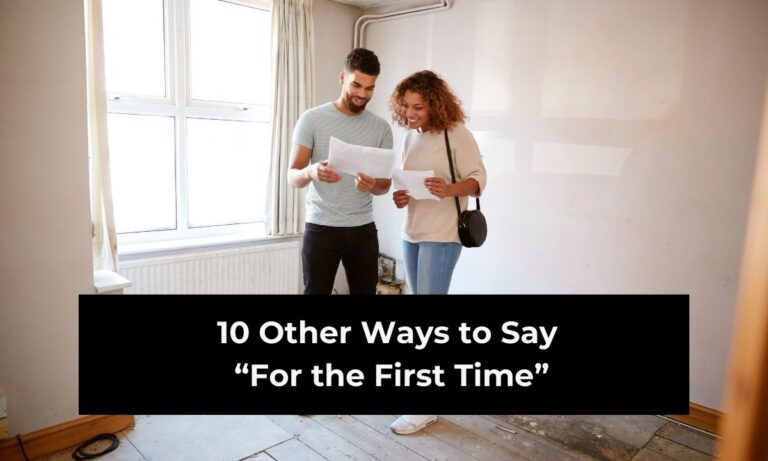You know the feeling when someone thanks you and you instinctively reply, “Happy to help”? It’s polite, simple, and shows that you were glad to be of assistance. But here’s the thing—you don’t always want to sound repetitive, especially in professional emails, customer service chats, or even casual conversations. Using the same phrase over and over can make you sound robotic rather than genuinely supportive.
That’s where variety comes in. Just like you wouldn’t wear the same outfit to every occasion, you don’t have to rely on “Happy to help” as your default response. There are plenty of other phrases you can use that convey the same warmth, helpfulness, and willingness to support—without sounding overly rehearsed.

Choosing the right alternative depends on your situation. If you’re writing a work email, you may want to sound professional yet approachable. If you’re responding to a friend or client, you might lean into something more personal and conversational. And if you’re in customer service, your words can carry a lot of weight in building trust and leaving a lasting impression.
In this article, you’ll discover 10 other ways to say “Happy to help” that you can start using today. Each phrase comes with examples and insights into when to use it, so you can feel confident tailoring your response to match your tone and audience. By the end, you’ll have a go-to list of phrases that make you sound friendly, authentic, and adaptable.
Must Read:
- Other Ways to Say “Happy to Assist”
- Other Ways to Say “Happy to Announce”
- Other Ways to Say “Always Welcome”
1. “It’s My Pleasure”
If you want to add a touch of professionalism while keeping things warm, “It’s my pleasure” is a perfect alternative. This phrase works particularly well in customer service, business communications, or formal settings. It not only acknowledges gratitude but also reinforces that helping was enjoyable for you.
For example, when a client thanks you for resolving an issue quickly, responding with “It’s my pleasure” shows that you view helping them as part of what you enjoy doing—not just an obligation. Unlike “No problem” or “Don’t mention it,” this phrase carries a positive and intentional tone.
You’ll often hear “It’s my pleasure” in high-end service industries like hospitality or customer care, where the goal is to make every interaction feel polished and respectful. Using this phrase in your own interactions can elevate the professionalism of your response, while still keeping it approachable and friendly.
2. “Always Glad to Help”
Sometimes you want to go beyond the moment and show that you’re not just willing to help once but are consistently available. That’s where “Always glad to help” comes in. It reassures the other person that you’re approachable and dependable whenever they need support.
This phrase works especially well in professional relationships where ongoing collaboration is expected. For instance, if a coworker thanks you for reviewing their presentation, you could say, “Always glad to help—don’t hesitate to ask me again.” This builds a sense of reliability and reinforces teamwork.
Compared to the shorter “Happy to help,” the word “always” adds emphasis, signaling that your willingness to assist extends beyond the current interaction. It shows commitment without sounding forced. Whether in workplace conversations, emails, or even casual chats, this alternative strengthens connections by showing that your support is genuine and ongoing.
3. “No Trouble at All”
When you want to make sure someone doesn’t feel like they’ve inconvenienced you, “No trouble at all” is a thoughtful response. It reassures the person that their request wasn’t a burden and that you were glad to step in.
For example, if a neighbor thanks you for helping carry groceries, replying with “No trouble at all” instantly eases any guilt they may have felt for asking. The phrase works in personal and professional settings, especially when someone may have been hesitant to ask for assistance in the first place.
This alternative is softer than “Happy to help” because it highlights that the effort was minimal for you. It helps put the other person at ease while still maintaining a polite and friendly tone. By using “No trouble at all,” you’re sending the message that helping them was natural and effortless.
4. “Anytime”
One of the simplest yet most powerful alternatives is “Anytime.” It shows that your willingness to help isn’t limited to the present—it extends to future interactions as well. This makes it ideal for colleagues, friends, or clients who may need your assistance again.
Picture this: someone thanks you for explaining a tricky process at work. Instead of the usual “Happy to help,” saying “Anytime” makes your response feel open-ended and welcoming. It creates space for future collaboration without making the person feel like they’re imposing.
The beauty of “Anytime” lies in its brevity. It’s casual enough for everyday conversations, yet still conveys generosity and approachability. If you want to sound easygoing but supportive, this is a phrase that fits almost every context.
5. “That’s What I’m Here For”
Sometimes you want to highlight your role in providing support, whether it’s in your job or within a group. “That’s what I’m here for” communicates that helping isn’t just something you did out of kindness—it’s part of why you’re there.
In a customer service role, this phrase can be especially powerful. For example, if a customer thanks you for quickly fixing a problem, replying with “That’s what I’m here for” reinforces that their satisfaction is your priority. It sets the tone that you’re available and willing to go above and beyond.
The phrase works in personal settings, too. When a friend appreciates your advice, responding with “That’s what I’m here for” underscores the supportive role you naturally play in their life. It makes your response sound authentic, helpful, and purpose-driven.
6. “Of Course”
Sometimes the simplest phrases make the strongest impression. “Of course” is a short, sincere way of saying you were glad to help without sounding overly formal. It conveys natural willingness and reassurance.
For instance, if a colleague thanks you for covering a shift, replying with “Of course” shows that you’re dependable and didn’t hesitate to step in. It removes any sense of obligation and replaces it with genuine readiness.
This phrase works well in both professional and casual situations. It’s versatile, easy to say, and naturally warm. Unlike “No problem,” which can sometimes feel dismissive, “Of course” sounds open and intentional. It assures the other person that their gratitude is appreciated and that your help was freely given.
7. “Don’t Mention It”
“Don’t mention it” is a classic phrase that downplays the effort you put in and makes the other person feel comfortable. It signals that your help wasn’t a big deal and doesn’t require extended thanks.
For example, if someone apologizes for taking up your time, replying with “Don’t mention it” reassures them that they haven’t inconvenienced you. It’s casual, light, and puts the other person at ease.
This phrase has been around for a long time and still works in both casual and semi-professional contexts. While it’s slightly less formal than “It’s my pleasure,” it maintains a friendly and considerate tone. It’s perfect for moments when you want to ease tension and make gratitude feel less formal.
8. “Always Here If You Need”
If you want to convey ongoing support, “Always here if you need” is a comforting option. It lets the person know that your help isn’t limited to one instance—you’re available whenever they might need assistance again.
This phrase works especially well in friendships or mentorship roles, where long-term support is valued. Imagine a student thanking a mentor for guidance. Replying with “Always here if you need” shows your commitment to being a consistent source of help and encouragement.
It’s slightly more personal than “Anytime,” making it a good choice when you want to emphasize care and reliability. Whether in personal or professional contexts, this phrase carries warmth and reassurance that you’re invested in the relationship.
9. “Glad I Could Help”
Sometimes you want to reflect directly on the situation and express satisfaction that you were able to contribute. “Glad I could help” strikes that balance perfectly. It acknowledges that you’re pleased with the outcome while staying humble.
For instance, if a coworker thanks you for brainstorming ideas, you can respond with “Glad I could help.” This shows that you valued being part of the solution and genuinely appreciated the opportunity to contribute.
This phrase is adaptable—it can be used in casual, professional, or even formal contexts. It’s a bit more personal than “Happy to help,” since it emphasizes your own satisfaction in being useful. It makes the interaction feel authentic and positive.
10. “Not a Problem at All”
A slightly more casual alternative, “Not a problem at all” reassures the other person that their request wasn’t a burden in any way. It’s especially effective if someone feels like they’ve put you out of your way.
For example, if a neighbor apologizes for asking you to water their plants, you might say, “Not a problem at all.” This lets them know that you didn’t mind and were happy to do it.
The phrase carries a relaxed, approachable vibe. It works well in both personal and professional interactions where you want to sound easygoing and accommodating. By using “Not a problem at all,” you eliminate any sense of inconvenience and emphasize your willingness to help.
Conclusion
Finding new ways to say “Happy to help” can completely change how your message is received. Each alternative carries its own tone—some are professional and polished, while others are casual and comforting. The key is choosing the phrase that best matches the situation and the relationship you have with the person you’re responding to.
Whether you say “It’s my pleasure” in a formal email, “Anytime” to a coworker, or “Always here if you need” to a friend, each phrase adds variety and sincerity to your communication. Instead of sounding repetitive, you’ll come across as thoughtful and intentional.
The words you choose matter more than you might realize. They can build stronger connections, reassure others, and make every interaction feel genuine. So the next time someone thanks you, skip the usual “Happy to help” and try one of these alternatives instead. You’ll not only sound more engaging but also leave a lasting positive impression.
FAQs
1. Why should I use alternatives to “Happy to help”?
Using different phrases keeps your responses fresh, sincere, and better suited for different contexts, whether professional or casual.
2. Which alternative is best for formal situations?
“It’s my pleasure” or “That’s what I’m here for” work best in formal or professional environments.
3. What should I use in casual conversations?
Phrases like “Anytime,” “No trouble at all,” or “Not a problem at all” are ideal for everyday, friendly interactions.
4. Can I use these alternatives in emails?
Yes! Many of these phrases—like “Always glad to help” or “Glad I could help”—work beautifully in professional and personal emails.
5. How do I choose the right alternative?
Think about your audience and tone. If it’s a client or boss, go formal. If it’s a friend or colleague, casual phrases work well.





